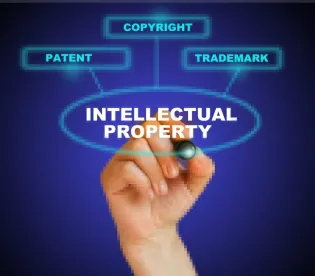Chinese utility model patents are often overlooked by U.S. applicants when filing patent applications in China. This might be due to a lack of familiarity with them, as the U.S. patent system does not separately provide a similar intellectual property right, and many inventions may not qualify for a UM patent due to limited subject matter eligibility.
The China National Intellectual Property Administration grants UM patents only for products. The products “shall be objects manufactured by industrial methods, having definite shape and structure, and occupying a certain space.”[1] Accordingly, methods, chemicals or computer-readable medium claims are not subject-matter eligible for UM patents.
Despite the limited subject matter eligibility, compared to invention patents, UM patents do offer advantages including low official fees and annuities, fast grant (usually six to 12 months),[2] no substantive examination, no publication before grant and lowered inventiveness requirement. These advantages make UM patents easier to obtain within a short period of time and harder to invalidate compared to invention patents.
UM Patent Benefits
The two main benefits of UM patents are a quick grant and a lowered inventiveness requirement. The average time to grant a UM patent is less than one year from filing. In contrast, an invention patent will be granted on an average of two to three years.[3] With respect to inventiveness, Article 22 of the Chinese Patent Law only requires UM patents to possess substantive features and indicate advancements, compared to the heightened requirement that invention patents possess prominent substantive features and indicate remarkable advancements.
This leads to a significant number of existing UM patents that are susceptible to an invalidity challenge. However, particularly for high-quality UM patents, invalidation is in fact harder than challenging invention patents. According to the Chinese Patent Examination Guidelines,[4] UM patents can only be invalidated by combining two references to attack inventiveness, compared to invalidating invention patents where an unlimited number of references may be used.
Another benefit of UM patents is the lack of publication procedure before grant. This enables applicants to keep their inventions secret until a UM patent grant or product launch, similar to filing to a nonpublication request in the U.S., but without any restrictions on foreign filing.
UM Patents Limitation
Besides the above-mentioned limits on subject matter eligibility, another downside to UM patents is their short patent term of only 10 years from filing or priority date instead of 20 years for invention patents.[5] Accordingly, UM patents may be a better option for those technologies that quickly become obsolete or where prompt enforcement in a short period of time is needed (e.g., software or semiconductors) instead of technologies that take time to develop and achieve market adoption and yet have a long lifetime of use once developed and adopted.
The Best of Both Worlds — Same-Day Filing of UM and Invention Patent Applications
For technologies that are subject-matter eligible, applicants may file UM patents and invention patent applications simultaneously invoking Article 9 of the Chinese Patent Law, which reads: “same invention may only be awarded one patent. However, an invention patent application and a utility model patent application relating to the same invention may be filed on the same day, that applicant shall only obtain the invention patent by abandoning the prior granted utility model patent.”
Due to the time discrepancy in allowance, it allows an applicant to quickly gain patent protection as soon as the UM patent is granted while the invention patent application is still pending. In practice, an applicant may obtain both UM patent and invention patent if the invention patent application is later amended so that invention patent and UM no longer coexist in scope. Often, amendments during prosecution have caused the scope of the invention patent to vary significantly from the UM patent, so that applicants are likely to secure both patents.
Further, the UM patent may provide a fallback option in case the invention patent is never granted. Due to the lowered inventiveness requirement of UM patents, failure of pursuing invention patent protection may not reflect negatively on the validity of UM patent.
Applicants cannot file applications for both invention patents and UMs when entering the national phase from a Patent Cooperation Treaty application. Instead, applicants must choose either a UM or invention patent but cannot claim both.[6] Accordingly, applicants should file the same-day UM and invention patent applications claiming priority to a foreign national or a PCT application on or before the one-year anniversary of the such claim via Paris Convention.
Finally, filing both UM and invention patent applications simultaneously does not add significant costs to applicants. Often, the same translation excluding the method claims can be used in the UM patent application as in the invention patent application. Accordingly, for subject matter eligible inventions, applicants should consider filing UM and invention patent applications simultaneously in China.
UM Patent Evaluation Report
One other distinction between invention and UM patents is that UM patents require an evaluation report prepared by the Chinese National Intellectual Property Administration, upon initiating or during litigation if requested by courts.[7] Because UM patent applications are not substantively examined before issuance, they are likely to raise validity issues if UM patents are used in enforcement. A UM patent evaluation report is required by law as a part of the prima facie evidence of infringement.[8] Absence of such report may result in stay or default judgement in favor of the defendant during patent infringement lawsuits.[9]
UM patent evaluation report can be requested by patentees or any interested parties,[10] and is subject to public inspection once it is issued. The reports include evaluation of novelty, inventiveness, enablement, lack of support, subject matter eligibility, etc.[11] Accordingly, evaluation reports may provide insight to potential defendants and licensees as to the likelihood of an infringement action being filed.
[1] 6.1, Chapter 2, Part 1 of Chinese Patent Examination Guideline
[2] http://www.cnipa.gov.cn/jldxx/1098435.htm. Data from 2017.
[3] http://www.cnipa.gov.cn/jldxx/1098435.htm
[4] 4(2), Chapter 4, Part 6 of Chinese Patent Examination Guideline, UM patents can only be invalidated by combining together two references to attack inventiveness, unless additional references are to provide motivation to combine first two references.
[5] Article 42, Chinese Patent Law
[6] 3.1.2, Chapter 1, Part 3 of Chinese Patent Examination Guidelines
[7] Article 8 – 9, Several Provisions on Reviewing Patent Disputes by Supreme People’s Court 2015
[8] Article 61, Chinese Patent Law
[9] Article 8, Several Provisions on Reviewing Patent Disputes by Supreme People’s Court 2015
[10] Interested party refers to the licensee of exclusive patent license contract and the licensee of common patent license contract who has been authorized right of action by the patentee. See Section 2.2, Chapter 10, Part 5 of Chinese Patent Examination Guidelines.
[11] 3.2.1, Chapter 10, Part 5 of Chinese Patent Examination Guideline




 />i
/>i

